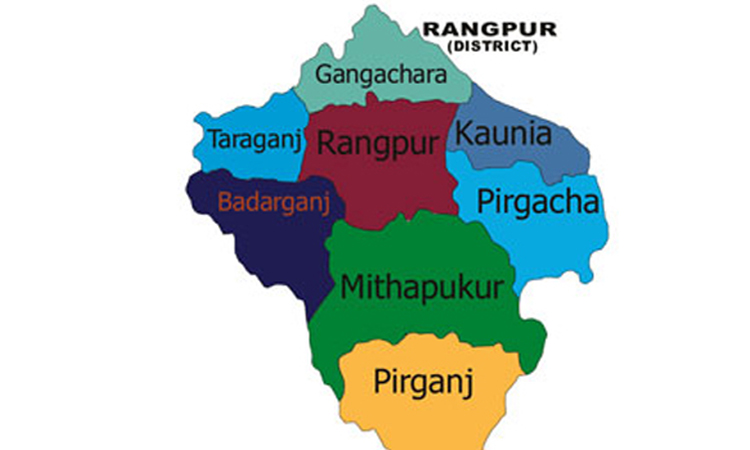News Flash

By Md Mamun Islam
RANGPUR, Sept 29, 2025 (BSS) - Implementation of a surface water conservation project has brought revolutionary changes to the agricultural economy of Badarganj upazila in Rangpur, improving the livelihoods of over 20,000 farmers of many villages.
The implemented 'Expansion of irrigation in greater Rangpur district through best uses of surface water and conservation of rainwater (EIR)' project is helping farmers to produce 97,820 tonnes of additional paddies worth Taka 293-crore annually in the upazila alone.
Barind Multipurpose Development Authority (BMDA) under the Ministry of Agriculture has implemented the five-year (2019-2025) term EIR project in 35 upazilas of Rangpur, Nilphamari, Kurigram, Lalmonirhat and Gaibandha districts, spending Taka 288-crore.
Farmers of Badarganj upazila said re-excavation of extinct canals and rivers has freed their 13,400 hectares of land from decades-long water-logging enabling them to cultivate Aman and Boro paddies for the first time in four decades.
Previously, when the rainy season started late in June, farmers could only cultivate Boro rice on these lands because those remained waterlogged for six to nine months or the entire year due to the lack of drainage for rainwater and floodwater.
Farmer Mashiur Rahman of village Sangkarpur said re-excavation of the 12.92 km portion of the extinct river Mora Teesta has revived water flow there improving drainage of rainwater and floodwater freeing 1,100 hectares of land from waterlogging in the area.
"The re-excavated river recently carried out rainwater instantly to the river Jamuneswari freeing my 1.62 hectares of my land from water-logging where I have cultivated Aman paddy for the third consecutive time this season," he said.
He now cultivates three crops, including Aman paddy, Boro paddy and potato or other vegetables annually on his land.
Farmer Harun Ar Rashid of nearby village Jharpara in Badarganj upazila said re-excavation of the river has also enabled him to cultivate three crops, including Aman paddy, Boro paddy and potato on his 2.02 hectares of land annually.
Housewives Momina Begum, Nur Nahar, Kulsum Begum of village Kamarpara and Hosne Begum of village Jharpara said re-excavation of the extinct river Mora Teesta has become a blessing for local people again after four decades.
"Like many others, I am cultivating vegetables, banana and Napier grass on the banks and rearing ducks in the re-excavated river Mora Teesta to improve livelihoods," said a smiling Momina Begum.
Golam Mortuza of village Kazipara said re-excavation of the 16.17 km portion of the extinct river Ghirnoi has freed 4,800 hectares of land from water-logging allowing 4,200 farmers to cultivate three crops annually on their lands.
"I have cultivated Aman paddy on my 1.50 hectares of land freed from waterlogging for the third time this season," he said, adding that he will cultivate potato and Boro paddy subsequently on the land.
Farmer Nezamul Haque of nearby village Dakshin Bishnupur in Badarganj upazila has been cultivating Aman and Boro paddies and vegetables annually on his one hectare of land, freed from waterlogging.
Ramnathpur union parishad Member Sajedur Rahman of village Uttar Ramnathpur said that re-excavation of the 3.8 km portion of the extinct Damuar canal has freed 500 hectares of land from waterlogging, benefiting 2,000 farmers of many villages.
"I have been cultivating Aman paddy, Boro paddy and vegetables on my 2.50 hectares of land for the last three years," he said.
The beneficiary farmers said that many of them also lifted conserved surface water from the re-excavated rivers and canals using low-lift pumps for supplementary irrigation for plantation of Aman paddy seedlings during recent drought-like situations.
Local people are also using the conserved surface water for irrigation, supplementary irrigation and rearing ducks, farming fish and household activities.
EIR Project Director and BMDA Superintending Engineer for Rangpur Circle Md Habibur Rahman Khan said people have started reaping multidimensional benefits from the project implemented in 35 upazilas, including Badarganj upazila of Rangpur.
Re-excavation of extinct rivers, canals and water bodies has effectively facilitated drainage of rainwater and floodwater to promote agriculture ensuring best uses of conserved surface water to benefit thousands of people.
"Re-excavation of 58.91-km portion of eight extinct rivers and canals has freed 13,400 hectares of land in Badarganj upazila from waterlogging to produce 97,820 tonnes of additional paddies worth Taka 293 crore annually," he said.